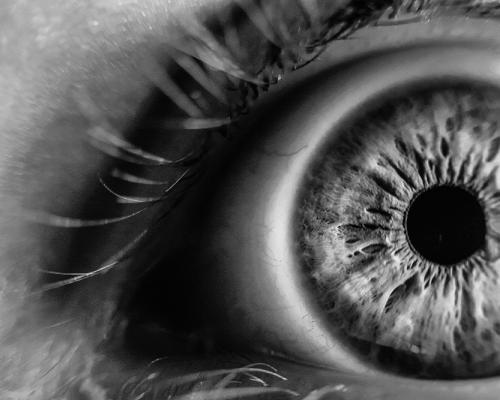The human givens: in our own words
A set of stand-alone articles on Stress, Anxiety, Phobias, Panic attacks, PTSD, Depression, Addiciton, Anger and OCD that human givens practitioners can use to promote both the approach and their own practice.
Would you like to promote the human givens approach, and your own practice, where you live? If so, please feel free to use the following articles, written specifically for the purpose by
Denise Winn, HG Therapist and Editor of the HG Journal
HUMAN givens practitioners are sometimes invited by editors of local newspapers or newsletters to write an article on some aspect of mental distress, such as anxiety, depression or addiction. Usually the expectation is that this will be done for free and many people just don’t have the time to spare or else lack confidence in their writing skills. Thus, sadly, a valuable opportunity to spread knowledge about the human givens approach and its effectiveness is lost.
It is in response to this that we are offering here a set of stand-alone articles that human givens practitioners can use or adapt if asked to supply articles or if they themselves wish to approach a local publication. You are free to top, tail, chop, tweak or add bits together, according to need, and include your own case material and personal details as appropriate. However, if a paying publication, such as a national magazine or newspaper, asks for an article, the expectation is that it will be original and not previously published elsewhere. In such cases, while practitioners may still make use of or draw inspiration from the information that appears here, you will need to frame your ideas in your own way.
THE HUMAN GIVENS
All forms of mental distress arise because, in one way or another, people’s physical or emotional needs are not being met. Our essential needs and our innate resources to help meet them – the ‘givens’ of human nature – are at the heart of the human givens approach. If all our needs are met in balance, making us confident about our place in the world and the people we connect with, we don’t suffer from disabling conditions, such as anxiety and stress, depression, addictions, phobias or panic attacks.
We all know that we have physical needs – for food, water, warmth and shelter – which must be sufficiently met to enable us to survive and thrive. But people often don’t realise that certain emotional needs are just as crucial for both our mental and physical health. Decades of health and social research have revealed, for instance, that a sense of security, intimacy, social connection, status, autonomy and control, competence and achievement, and meaning and purpose are also vital, if we are to stay in good health and feel fulfilled in our lives. Our innate resources for helping us meet these needs include the ability to build rapport, empathise and connect with others; to learn, problem solve, remember and plan; to use our imaginations productively; and to step back and take an objective look at our circumstances. When any of our important needs is seriously unmet over a significant period or any of our resources is not made best use of, mental and physical ill health may develop.
This is why, when human givens practitioners work with people in mental distress, they look for what is missing in those people’s lives and seek ways to redress that, as well as teaching them important life-coping skills.
STRESS
Stress results from a build-up of mental and/or physical pressures to a level that we find overwhelming. The amount and type of stress we can stand will vary from individual to individual – for instance, one person may get a buzz from giving a talk to hundreds of people whereas someone else will be a nervous wreck in similar circumstances. We may all have to go through different stresses in a lifetime – such as bereavement, job loss, relationship breakdown, serious illness, or the demands of caring for children or sick relatives. We have to cope with challenging life changes, such as leaving home for the first time, taking on new responsibilities at work or settling down with a new partner. Even when these are pleasant developments, they can still take a mental and physical toll on us. When lots of little stresses and some big ones happen in a short period of time, we may lose our ability to cope well. If we feel defeated by all we have to do, and lack drive and energy, that is stress.
Stress is the modern-day effect of an evolutionary mechanism known as ‘fight or flight’, designed to save our distant ancestors from dangers in the wild. For instance, when under physiological stress, our muscles may tense, blood pressure soar, the heart race and the chest hurt, as breathing becomes shallow and quick; saliva may dry up and we might sweat and shake. When these bodily changes took place for our ancestors, it was because they faced a major threat, such as a wild boar attack, and they needed to gear up to run for it or to fight for their lives. Once they had taken action, and survived, all the physiological arousal would quickly subside.
But in modern times, it is rarely a wild boar that makes us feel threatened. More often, it may be an over-demanding boss or not having enough control over our work (stress is now the most common cause of long-term sickness absence) or the demands of taking a sick relative to regular hospital appointments while trying to hold down a full-time job. The stress doesn’t end and so the physiological effects don’t ebb. That’s why we get physical symptoms from severe stress, such as disturbed sleep and ailments such as frequent migraines, backache, angina, skin eruptions, bowel problems, stomach cramps or high blood pressure. And we commonly feel highly anxious or depressed.
All these symptoms are warnings that important emotional needs are not being met (maybe our lives feel lonely, too demanding or meaningless) and that something has to change, to bring the harmful stress levels down. That’s why the human givens approach, which focuses on helping people find healthy ways to meet their essential emotional needs, is so effective.
ANXIETY
We all need to experience some degree of anxiety at times – it would be unnatural not to feel any of its symptoms, such as racing pulse, dry mouth, sweatiness and shallow breathing, just before a big speech or exam, for instance – as it helps get us motivated to act. But excessive anxiety causes problems. Excessive anxiety may develop gradually, starting, perhaps, with loneliness after the loss of a loved one; being too shy to make new friends when moving somewhere new; experiencing unwelcome life changes because of chronic illness and pain; or feeling loaded down with too much responsibility – all cases of unmet emotional needs.
When people worry excessively, it is in essence because important emotional needs, such as for safety, connection or status, are not being met. That’s why the human givens approach, which focuses on helping people in distress find healthy ways to meet their emotional needs, is so effective.
For some people, anxiety can develop suddenly, after they are caught up in some tragic disaster, such as a fire or a crash, or are the victims of violence, and their lives become ruled by fear. (This is known as post-traumatic stress.) Anxiety may also take the form of obsessions, compulsions, phobias or a nagging feeling of foreboding – all of which are attempts to ward off a sense of threat.
Yet, as we know, some people face such circumstances without becoming overly anxious, while others end up almost crippled by anxiety. How we explain the negative events that happen to us has a considerable bearing on whether we are likely to suffer from excessive anxiety. Three particular types of thinking are especially connected with its development and its close partner, depression: how personally people take events (they think everything is their fault or that they didn’t get the job because they weren’t good enough, rather than because the competition was particularly stiff); how pervasive they think the effects will be (if they lose their job, they think everything in their world is going wrong, even though their relationship is still strong and they have their health, good friends, etc); and how permanent(they will never get another job, partner, dream house like that one, etc).
People who suffer badly from anxiety also tend to have a lot of negative thoughts running through their minds that they don’t even notice (“I’ll never cope”; “it’s going to be awful”; “no one likes me”) and commonly catastrophise (“I’m going to be late. My boss will sack me!”) Changing negative self-talk and challenging catastrophic thinking help lower stress levels.
Another major cause of troublesome anxiety is negative over-imagination. Anxious people tend to spend a lot of time worrying “What if?”, coming up with a whole variety of dreadful outcomes for themselves or their loved ones. This keeps them in a constant state of high emotional arousal and can take the extreme forms of phobias or obsessive-compulsive disorders. Learning to use the imagination positively – by calmly rehearsing mentally tried and tested techniques (such as deep breathing and distracting thoughts) for dealing with feared or worrisome situations – is very effective. Calming ourselves down, when anxious, is extremely important because high emotional arousal makes us stupid. We literally can’t think straight and that makes the situation worse.
Human givens practitioners can show people how to relax, so that they can bring their own arousal and stress levels down, and how to use their imaginations positively, to rehearse successful outcomes instead of bad ones. They can also help people overcome phobias, panic attacks and traumatic memories quickly and painlessly. And, very importantly, they will encourage people to find ways to reduce their stress and also focus outwards on fulfilling activities (maybe involving the wellbeing of others as well as themselves) – excellent ways of getting their own needs met.
PHOBIAS, PANIC ATTACKS AND POST-TRAUMATIC STRESS
The brain has an emotional alarm system designed to keep us safe. When people suffer from panic attacks, phobias or post-traumatic stress, it is because the system has gone into overdrive.
What happens is this. There is a small, structure in the brain, known as the amygdala (Greek for almond, which is its shape), that has access to our emotional memories and learned responses. It evolved in the distant past and its job is to match new circumstances to what is already in the store and alert us to anything that previously represented a risk and might do so again. In the distant past, this might have been a movement or flash of colour that could have signified an approaching predator. The amygdala would then have triggered changes to help the body get ready to fight or flee the danger – pounding heart, racing pulse, quick, shallow breathing, etc.
Now imagine this. A young woman, who has had a highly stressful day, is waiting in a long supermarket queue, worrying whether she’ll be out of the shop in time to catch the bus to school to collect her little girl. It is one pressure too many. The amygdala responds as if she is under threat and she starts to feel her heart pounding strangely and her breathing quickens. She becomes terrified that she is having a heart attack and that makes the symptoms escalate – her palms sweat; her chest feels as if it is bursting and she struggles to breathe. Soon she feels overwhelmed and may collapse or run out of the shop. The amygdala, fearful that this could happen again, files away the fact that there were bright lights and lots of people queuing when the ‘threat’ occurred. Then, when the woman is queuing in the post office the next day, the bright lights and queue may be sufficient for the over-vigilant amygdala to trigger another panic attack to deal with the new ‘threat’.
Phobias start the same way – the amygdala makes associations with what was going on when a person first felt threatened, not all of which may be relevant. So, while it is understandable that someone who is attacked by a vicious dog may well develop a fear of dogs generally, it could equally be the case that someone develops a fear of broken glass because, on a previous occasion, when they had had a panic attack, there was broken glass lying near to where they collapsed. Agoraphobia develops when someone is too frightened of panic attacks even to leave the house.
In the case of post-traumatic stress, someone who was in the back seat of a car when a collision occurred may find it frightening to travel in the back seat again but there may be other, unconscious, connections with the accident too, such as the smell of petrol. So the person may experience seemingly inexplicable panic when filling up their own car with petrol.
Fortunately, human givens practitioners are taught a simple and effective way to deal with all these circumstances. If a traumatic memory is causing panic attacks, phobias or post-traumatic stress, they can use a powerful, painless visualisation procedure, known as the rewind technique, to take the emotion out of the memory and enable the memory of the event to be stored away as history, instead of as one that continues to intrude on the present. The memory remains, and always will remain, a deeply unpleasant one but no longer is it emotionally arousing. This method can work swiftly and reliably even in the most extreme of cases.
DEPRESSION
Contrary to common belief, depression is not primarily a biological illness, inherited through the genes. Nor is it the setbacks, crises or tragedies in our lives that cause depression. It is our response to adverse events that determines whether we get depressed or not. Research shows that people most likely to suffer depression are those who react to adversity by taking it personally, seeing all areas of their lives as blighted by it, and the misery as going on forever. Depression is always a second and unnecessary problem, and just makes problematic circumstances worse. This is good to know because it means that, instead of feeling helpless or hopeless, people can learn to take back control over their lives. They may not be able to change certain circumstances but they always have options about how they react to them.
The symptoms of depression include low mood, loss of interest or pleasure in usual activities, loss of appetite and energy, sleep disturbance, feeling agitated or lethargic, worthless or guilty, difficulty in thinking straight and having repeated thoughts about suicide. Antidepressant drugs may help some people because they lift levels of a ‘feel-good’ chemical in the brain; unfortunately, they do nothing to change the underlying circumstances or thinking patterns that led to the depression. Depression is always related to unmet essential emotional needs and that is why the human givens approach, which focuses on helping people in distress find healthy ways to meet their emotional needs, is so successful.
Depressed people may seem deflated and flat but, in actual fact, they have raised levels of a stress hormone called cortisol, which means that they are in a state of constant high emotional arousal. When our emotions are aroused we can’t think rationally, so this is why people deep in the grip of depression can’t concentrate well or even make simple decisions. Learning simple relaxation techniques to calm themselves down will start reducing those cortisol levels.
The main reason that depressed people are so emotionally aroused is that they spend a vast amount of time worrying about the future or beating themselves up about past events. Perhaps they still feel guilty about something that happened recently – or years ago; perhaps they are frightening themselves with dire ‘what if?’ scenarios (likely or unlikely), in which loved ones encounter dangers or they themselves lose their jobs or their homes; perhaps they feel beaten down by chronic pain or anger (“Why did this have to happen to me?” “How could he have been so cruel?”); or maybe they experience a combination. They also have a huge tendency towards negative thinking – “I’ll never be good enough”; “I’ll never cope”; “nothing ever goes right”; “the pain will only get worse”. All this kind of negative imagining and thinking saps an enormous amount of energy – and makes people utterly miserable.
Far from feeling more refreshed after a night’s sleep, most people with depression wake up next day still exhausted and feeling totally unmotivated. It is hard for them to get out of bed and do anything at all. We now know why this happens. Psychologist and co-founder of the human givens approach Joe Griffin carried out research over many years which showed that, when we dream at night, we are discharging unexpressed emotional arousals from the previous day. If earlier we were upset about something our spouse did or didn’t do, but kept it to ourselves, we would later dream that out, perhaps in the form of getting angry with someone else (dream content is never straightforward); that would have the desired effect of lowering our levels of emotional arousal, so that we can start next day afresh, even though we are unlikely to remember we had the dream. (If we did express our feelings with our spouse at the time, we wouldn’t need to dream about it. And, of course, if we wake up and remember what our spouse did or didn’t do, we may get emotionally aroused about it all over again, requiring more dream discharge that night, if we still don’t resolve it.)
Too many dreams
Research shows that depressed people dream much more than non-depressed people, distorting the balance between recuperative slow-wave sleep and energy-burning dream sleep. Clearly, because they spend so much time worrying and imagining, they have far higher amounts of unexpressed arousal to discharge. With so much energy spent on all the excessive dreaming they have to do, they wake up exhausted and lacking in motivation.
It is necessary for people in depression to be helped to challenge their negative thoughts, imagine more realistic outcomes and futures and to find ways to put meaning and purpose back into their lives. This could be through exercise, team sports, doing something for other people, learning a new skill, calling up old friends, and so on. Very often, people who are depressed start to withdraw from their usual routines, stopping going out or phoning or seeing friends, and this makes them dwell on their misery even more. It is essential, therefore, that they are helped to start meeting their emotional needs again, in healthy and satisfying ways. If the depression is due to post-traumatic stress, it is also necessary to stop the traumatic memory from continuing to interfere with life in the present. The rewind technique, a simple, non-invasive method of detraumatisation that all human givens practitioners learn, can achieve this quickly.
Dwelling on and digging up the past is dangerous. Neuropsychological research has shown that this has a physical effect on the brain, strengthening the neuronal connections with misery and negative thinking. We get better at piano or football with practice and, unfortunately, we get better at depression with practice too! So, it really is important to think to the future instead – to learn to shift unhelpful thinking patterns, take back control, find ways to bring meaning and purpose back into life and to look forward with hope.
ADDICTION
You may choose to call it a craving, a fancy, a bit of a dependence but the truth is that anyone who becomes overly drawn to or obsessed by any activity – whether drinking alcohol, taking drugs, over- or under-eating, shopping, gambling, sex or even doing good deeds – is trying to fill a void or block out something that is missing in their lives. (Even smoking may start for that reason.) That’s why the human givens approach, which focuses on helping people in distress find healthy ways to meet their emotional needs, is such a successful method for overcoming addictions.
We know, from research, that people who feel fulfilled in their lives do not need (or stop needing) to indulge in addictive activities. In one famous experiment, rats were offered either morphine-laced water or ordinary water. When rats were kept alone in small cages, they tended to opt for the morphine, but when they were kept in groups in areas similar to their natural habitats, they preferred to drink the water. When the rats in the natural habitat were then put singly into cages, they started choosing the morphine-laced water, while the rats originally in the cages stopped choosing the morphine when put into natural-style habitats. This showed clearly that, when needs were met, rats did not want drugs. The same effect is found in humans. Most young people give up drug experimentation when they start careers and families.
People are much more likely to get caught up in addiction when important needs cease to be met, perhaps because of loss, caused by the death of someone close, a relationship ending, redundancy or illness, or by dissatisfaction arising from boredom or feeling trapped. Sometimes such circumstances lead first to depression and then to addiction.
It is now known that all addictive behaviours work through the same common pathway in the brain – the expectation pathway. So, when human givens practitioners help someone to overcome an addictive activity, they focus first on helping people knock out the expectations of pleasure that addiction falsely feeds us. If you have ever tried to stop an activity you are rather over-partial to, you may recall that, when you first decide not to have that drink or that cigarette or switch on the shopping channel, you don’t feel any great discomfort. It is as time goes on that the craving grows, often until it is irresistible.
What happens in the brain is this: when we first decide not to indulge in the activity, we feel calm; however, there is a structure in the emotional brain, called the amygdala, whose job it is to notice when anything out of the ordinary is happening and raise the alarm if it could mean danger. On this occasion, it notices that we haven’t had our usual cigarette, drink, shopping-channel fix. A sequence of chemical events takes place in the brain, which results in our being flooded with arousing emotional memories of how wonderful it was to smoke, drink, order goods when watching the shopping channel – and so we succumb.
Once strong desire is experienced, we recall only expectations of pleasure associated with the addictive activity. This makes our craving powerful, even overwhelming, instead of the very mild physiological discomfort we experienced at the start. But the memories are usually false because, as we know, when we feel we are being deprived of something we want, we exaggerate the joys of it. So we remember being the life and soul of the party and not being sick and having a hangover; we remember the thrill of buying new clothing and not the self-loathing while stuffing it, still in its glossy packaging, at the back of the wardrobe. In other words, the satisfaction is all in our heads.
Human givens practitioners help people change their expectations by relaxing them and then guiding them to visualise the downsides of the addictive activity – such as disabling illness, loss of loved ones, financial hardship, etc, instead of the false memories of fulfilment. When only these more realistic associations come to mind on experiencing a craving, withdrawal symptoms remain mild physiological ones, such as the sensation of gentle butterflies in the stomach or a furry tongue. After a while, if all false memories are rejected and only the fearsome ones are accessed from our emotional memory stores, craving ceases altogether.
People then need to be helped to find ways to meet their needs more healthily again, such as by starting or resuming social activities (most people with addictive behaviours gradually give less and less time to what they previously valued); facing whatever may have led to the addiction in the first place, such as a troubled marriage or work difficulties, and finding solutions; and learning ways to deal with future stress – or temptation – without relapsing. This will usually involve changing attitudes towards problems or setbacks, learning to see them as challenges that can be coped with; learning to calm aroused emotions down instantly; and being ready to take ‘emergency action’ to distract oneself from temptation, such as going for a walk or calling a friend.
When people genuinely realise that they have been hoodwinked into false expectations of pleasure and fulfilment from an addictive activity, they find that they can stop, and not miss it, however long they have been in its thrall.
ANGER
Road rage, plane rage, even art-gallery rage (when an exhibition is too crowded) are becoming all too familiar terms and are just some of the forms that over-the-top anger can take in modern-day life. Excessive anger can have an obvious trigger or else seem to occur out of the blue; and it can ruin lives, as work and relationships suffer. Excessive anger always results from stress and essential emotional needs not being met. That’s why the human givens approach, which focuses on helping people in distress find healthy ways to meet their emotional needs, is so successful.
The ability to get angry is natural. It is part of the ancient ‘fight or flight’ survival mechanism, which evolved to help our long-distant ancestors survive when, faced with attack from wild animals or invading tribes, they either had to stand up for themselves or flee. The pulse races, adrenalin surges, breath gets fast and shallow, blood surges into the muscles of the legs and arms and the body gets flooded with stress hormones, all so that we are ready to take action if we decide to act aggressively to ward off something or someone. Once action has been taken, the feelings subside.
But, today, there are far fewer occasions when threat is as real and physical as just described. If we get frustrated or feel angry with the boss, we may have to keep those feelings to ourselves, which leaves them circulating with no obvious way of being discharged. Or we may become more and more wound up by little annoyances that build up over the day until we reach a point when, over something seemingly trifling, we snap. There are many other circumstances that can lead us to have lower tolerance for irritations – for instance, overtiredness, feeling ill or hungry, hormonal changes, chronic pain or addictive cravings.
Sometimes people have a tendency towards anger because of chronic low self-esteem, which usually stems from abuse or neglect during childhood. As adults, they may never feel good or worthy enough and tend to lash out if they perceive themselves as slighted in any way. Mild brain damage can cause a loss of impulse control and aggression. And people on the autistic spectrum are often more prone to angry outbursts because of their difficulties and frustrations in trying to relate to other people and make sense of the social world.
More often than is realised, aggression is triggered by fear and sometimes it is a long-forgotten fear. For instance, a man who, as a child, was locked in a tiny dark space under the stairs as a punishment, may lash out, seemingly inexplicably, at his wife when she wants him to check the space under their stairs for damp. This is because an ‘alarm system’ in our brain, called the amygdala, accesses our emotional memories and, on the basis of previous experience, alerts us to anything that may represent a risk. Because the stair cupboard experience was so traumatic and frightening, it stays ‘live’, causing the man to experience terror all over again, usually without knowing why. Sometimes, too, repeated and seemingly inexplicable anger outbursts stem from ‘pattern matching’ to a shocking situation in childhood, when anger was felt but, at the time, suppressed.
Fortunately, people can be helped to deal with their anger, whatever its cause. Human givens practitioners will show people how to calm themselves down quickly (this is essential, as high emotional arousal makes us stupid, stopping us from listening to reason); encourage them to take exercise (doing enjoyable physical activity is a great way to discharge accumulated stress); and help them to examine and change their self-talk – having hostile thoughts only harms us – and to look at situations from other people’s perspectives as well as their own.
Simple, effective techniques can be used to resolve anger outbursts arising from incidents in the past, so that these cease to occur in the future.
Finally, human givens practitioners will help people explore what needs are not being met in their lives, which may be fuelling anger – for instance, a lack of a sense of achievement or status or control or connection with others may cause feelings of inferiority and hostility. Experiencing uncontrollable or excessive anger always means that something is not working well in a person’s life. No one is naturally an ‘angry’ person; they are just, temporarily, overcome by anger and can learn how to cease to be its victim.
OBSESSIVE-COMPULSIVE DISORDER (OCD)
OCD is a highly upsetting condition in which a sufferer experiences powerful, intrusive and distressing thoughts or images, usually connected with an imagined disastrous event (perhaps that one’s son will die in a car crash), and devises one or many rituals designed to reduce or ward off that event or make reparation for having the ‘bad’ thought. Usually, the more the rituals are carried out, the more the thoughts recur, requiring yet more rituals.
The condition first occurs because of raised stress levels, often as a result of trauma, physical illness, worry, fear, lack of sleep, some personal setback or crisis, or even a fright. People who develop the compulsion to wash their hands, and who often end up spending many hours a day in this activity, may first have experienced a generalised anxiety about their health or safety and then focused on a fear of germs. The bottom line is that some important emotional need is not being met. That’s why the human givens approach, which focuses on helping people in distress find healthy ways to meet their emotional needs, is so successful.
Rituals can be extremely varied and numerous, may involve walking across a room a certain way, picking up cutlery a certain way, counting or clapping a set number of times, etc, and have to be carried out in exactly the right way, otherwise the whole sequence must be begun again. Yet many sufferers are amazingly resourceful in hiding their condition.
What happens in OCD is that a primitive part of the brain, called the amygdala, which is our emotional alarm system, starts to associate the thinking of the OCD thought with danger, setting a stress reaction in train which leads the sufferer to carry out the ritual to avert the danger and reduce the stress. Sufferers are convinced that something dreadful will happen if they don’t complete their rituals, however many times they are required to do them. When they are caught up in this thinking and carrying out the rituals, they are in a trance state, just like a dream. And, just as our dreams seem totally real and believable to us when we are in them, so the trance state of OCD is equally compelling and believable to sufferers. They are, therefore, absolutely terrified about stopping their rituals.
It is essential to help a sufferer see that they are separate from the OCD – a lot of people choose to call it ‘the bully’, as a means of starting to see it as something outside of themselves. This helps them take a step back and begin to identify OCD thoughts (“if I don’t make and re-make the bed 10 times immediately, my daughter will be abducted on her way home from school”) as very different from normal thoughts. To help them to resist performing the rituals associated with the intrusive thoughts, they need to have distracting activities prepared, which they can launch into instantly – for instance, singing, dancing to music, doing the ironing, calling a friend, taking a walk; the activities need to be varied, so that a new ritual isn’t established.
The more that the OCD sufferer does not carry out the ritual after experiencing the thought, and realises that nothing terrible does happen, the more the rational part of the brain can override the nervy messages from the amygdala. As time goes on, and the messages continue not to be acted on, the thoughts start to fade and stop altogether.
This is not easy for sufferers to put into practice, of course, because they believe so strongly in the power of the ritual. Human givens practitioners use an effective technique to help resolve trauma, if one exists. They also use techniques to encourage them, while deeply relaxed, to visualise themselves, as if on a TV screen, experiencing the frightening thought but not carrying out the appeasement ritual and calmly doing something else instead, such as making a cup of tea or doing the washing-up. Going through this, in a calm state, in the imagination helps instruct the brain to respond this way in reality.
Just as important, human givens practitioners help sufferers identify what is lacking in their lives (it is quite common, for instance, for sufferers to have ceased to have a social or work life, because the rituals are so demanding) and help them to get their needs met in fulfilling ways.
This article first appeared in "Human Givens Journal" Volume 18 - No. 4: 2011
 We need your help – this article originally appeared in the Human Givens Journal which takes no advertising at all, in order to maintain its editorial independence.
We need your help – this article originally appeared in the Human Givens Journal which takes no advertising at all, in order to maintain its editorial independence.
To survive it needs new readers and subscribers – if you have found the articles, case histories and interviews on this website helpful, and would like to support the human givens approach – please take out a subscription or buy a back issue today.
Latest Tweets:
Tweets by humangivensLatest News:
HG practitioner participates in global congress
HG practitioner Felicity Jaffrey, who lives and works in Egypt, received the extraordinary honour of being invited to speak at Egypt’s hugely prestigious Global Congress on Population, Health and Human Development (PHDC24) in Cairo in October.
SCoPEd - latest update
The six SCoPEd partners have published their latest update on the important work currently underway with regards to the SCoPEd framework implementation, governance and impact assessment.
Date posted: 14/02/2024













